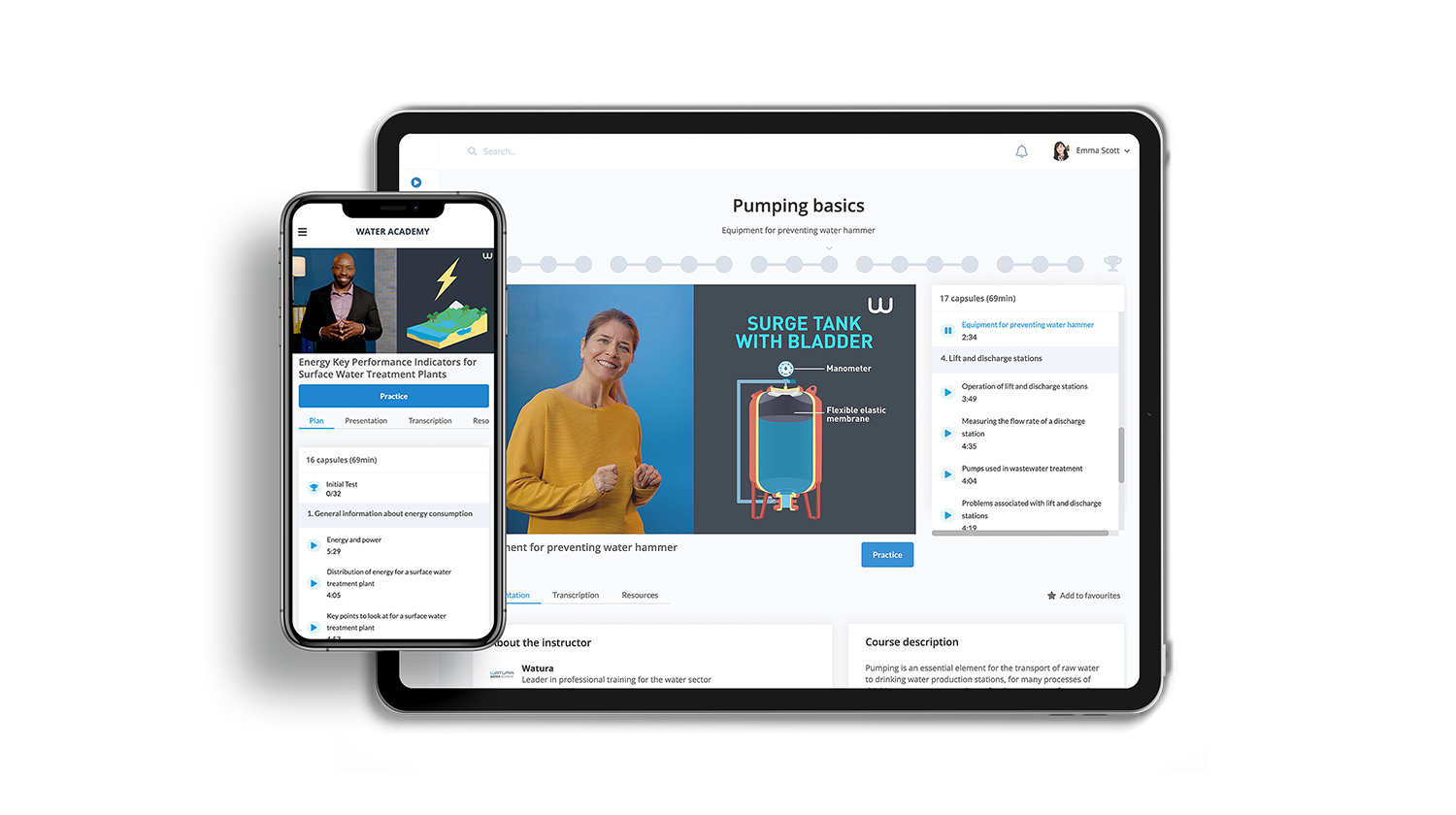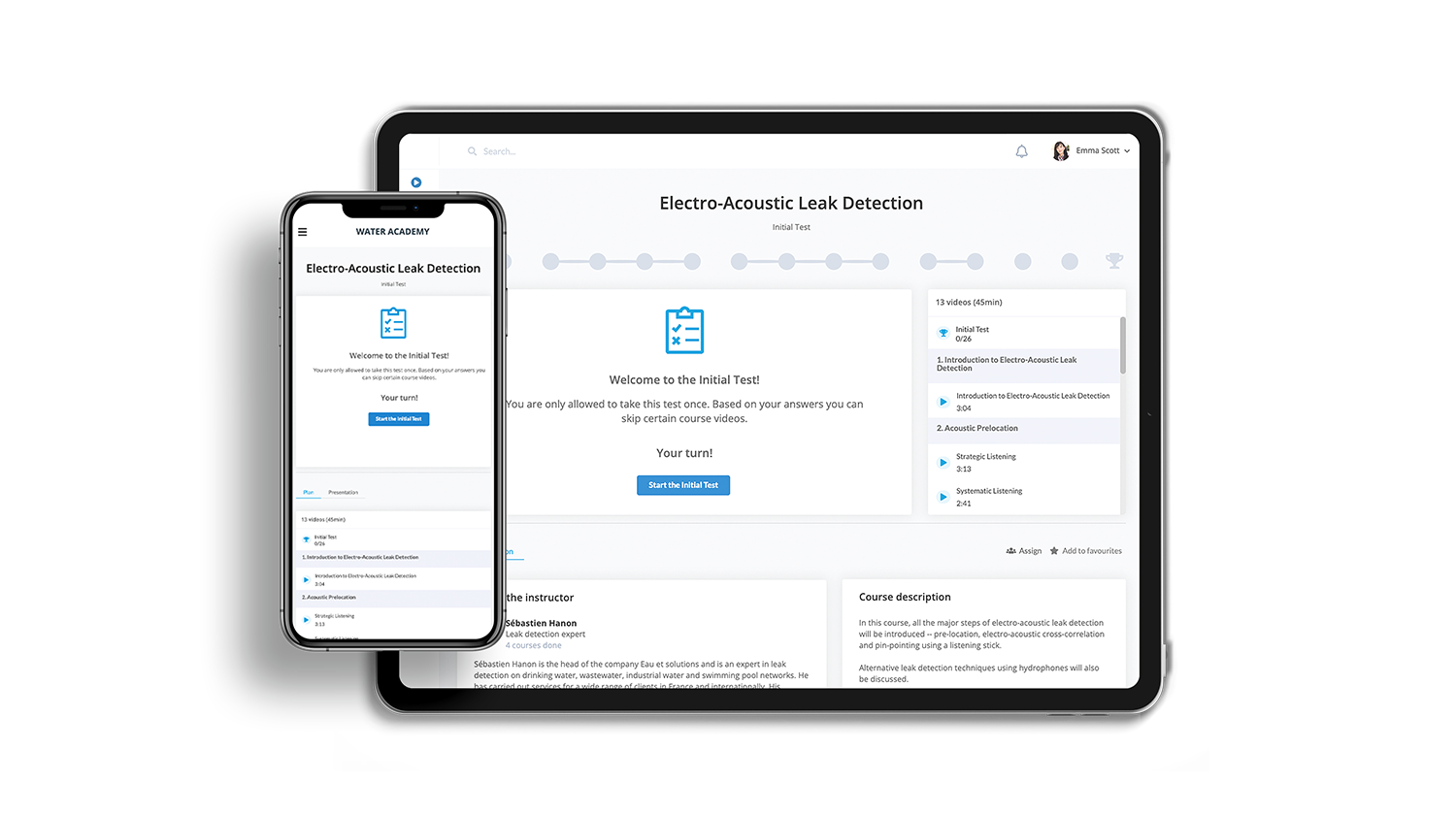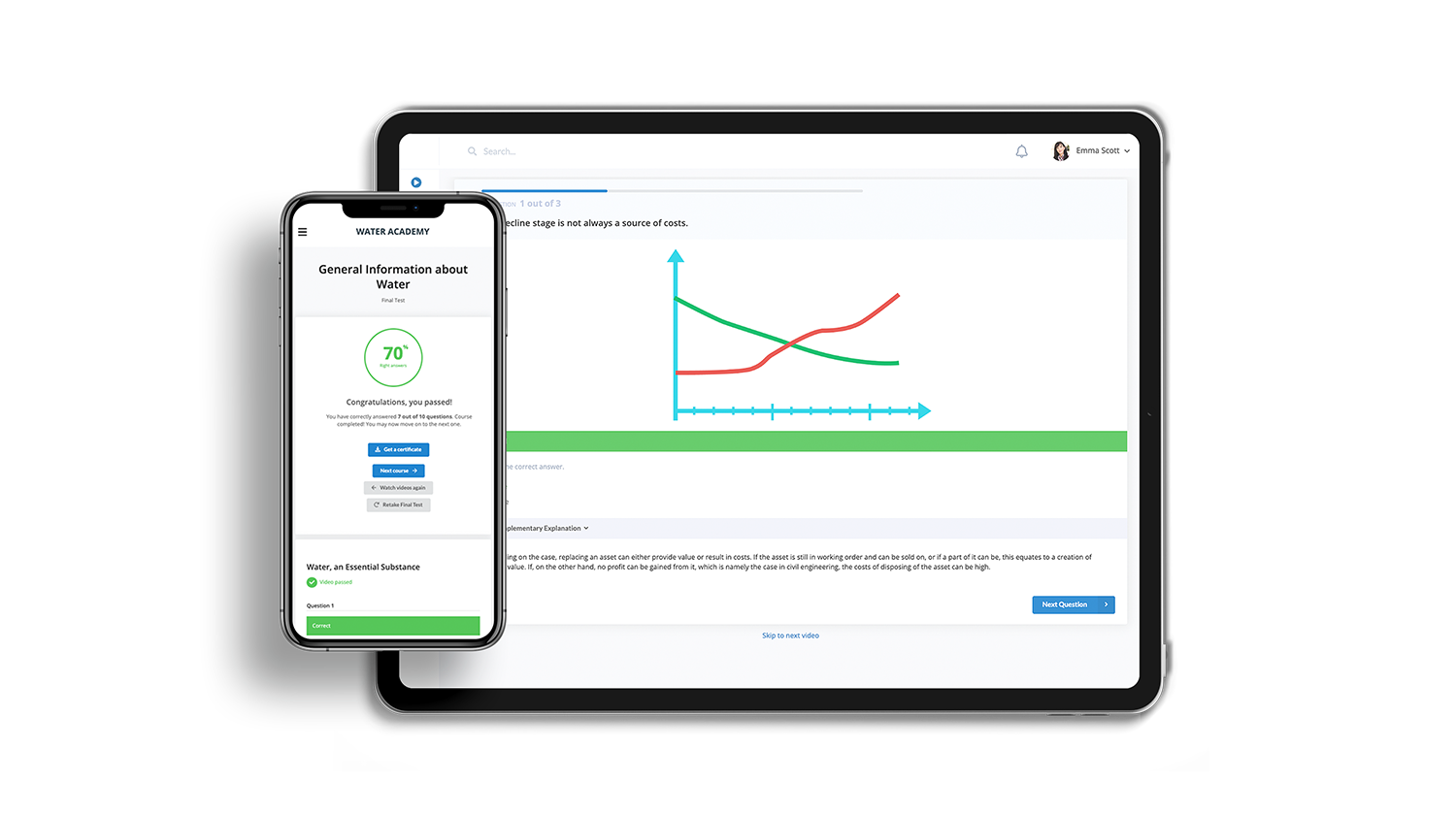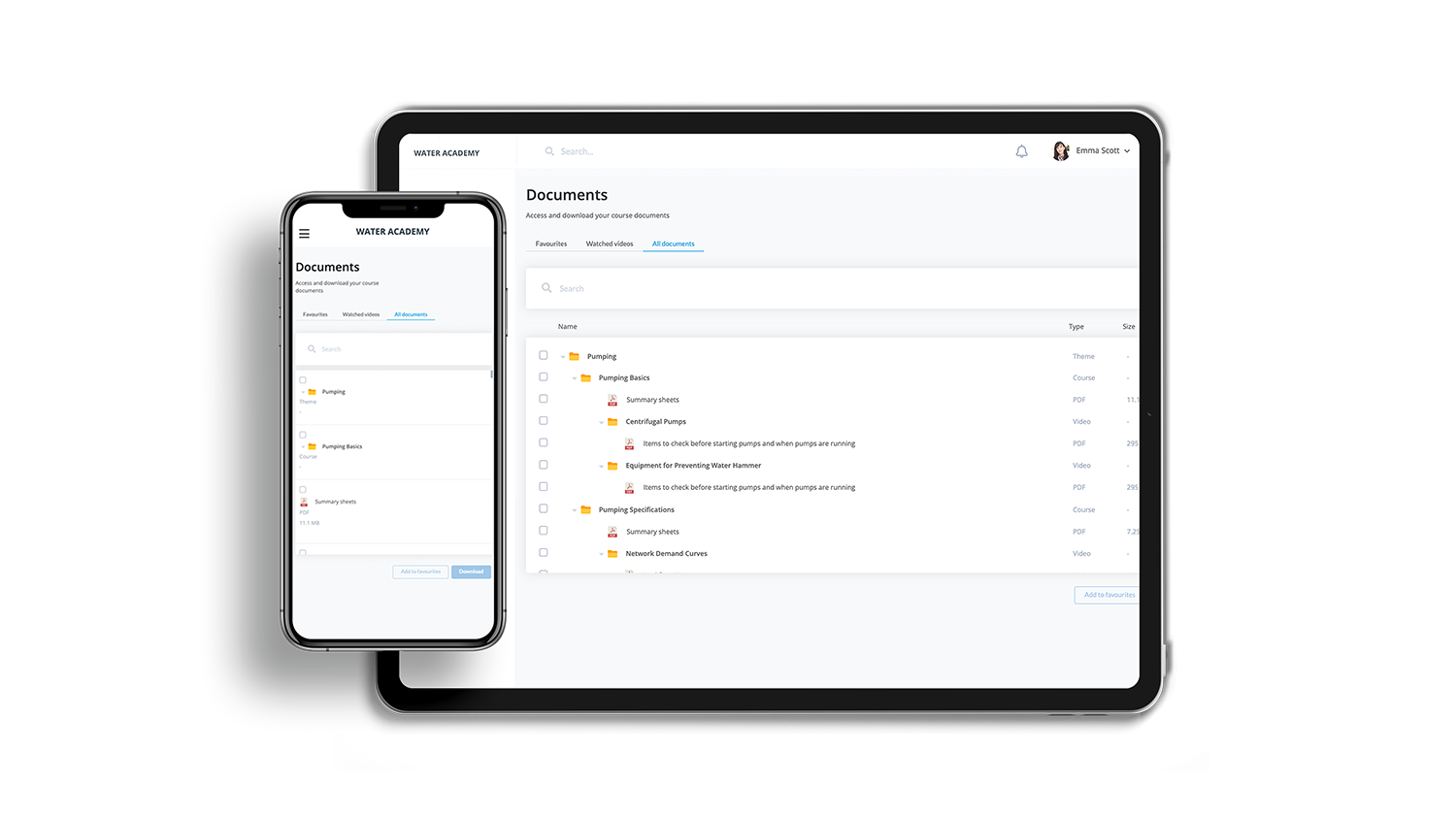1h30
E-learning Course:
Centrifugal Pumps : Inspection and Maintenance
What are the different monitoring systems for centrifugal pumps systems? How to use them?
total duration
38
minutes of video
8
videos
Training for…
Master the issues related to inspection and maintenance of centrifugal pumps
Take advantage of the flexibility of e-learning
Learn when and where you want — access our courses from your computer, tablet or smartphone. Need to take a break? Pick up later where you left off.
Solidify your knowledge over time
Need a reminder? You can access our courses for 12 months. Watch our videos and sharpen your skills as many times as you want.
Track your progress step by step
Start off with an initial assessment to know what you need to focus on. After finishing a course, do a final assessment to see how far you’ve come.
Train your staff on inspection and maintenance of centrifugal pumps
Training that adapts to your schedule
With short videos, your team can learn at their convenience — during dedicated time slots, while coming back from a site or even if there’s bad weather.
Ensure continued improvement
Need a reminder? Your staff can access our videos, interactive tests and other resources for 12 months.
Track everyone’s progress
Assign courses individually or to groups and monitor their progress from your control panel — assessment results, completion rates, learning times and more.
What you will learn
The regular monitoring of a pumping system is very important. It enables failures to be identified, breakdowns to be avoided and even costs to be reduced.
There are several types of monitoring: hydraulic monitoring, electrical monitoring and mechanical monitoring. In this training course, different monitoring methods will also be covered: vibration monitoring, thermography and misalignment.
Educational Objectives
To know how to monitor and maintain a pumping system using electrical monitoring
To know how to monitor and maintain a pumping system using vibration monitoring
To know how to monitor and maintain a pumping system using mechanical monitoring
Target Skills
- To be able to do a regular inspection on centrifugal pump systems
Your Contacts
Christian CALON
Course program:
Centrifugal Pumps : Inspection and Maintenance
16 questions to find out what you already know about inspection and maintenance of centrifugal pumps. Focus on the key points!
- Common Hydraulic Parameters to be Monitored
- The Operating Point of Centrifugal Pumps
- Electrical Inspection of the Centrifugal Pump Motor
- Mechanical Monitoring: Vibration Monitoring
- Mechanical Monitoring: Misalignment in Pumping Systems
- Mechanical Monitoring: Thermography and Oil Analysis
- Thermography
- Performance Monitoring and Analysis of Pumping Systems
Find out what you know about inspection and maintenance of centrifugal pumps.
Educational content developed by experts
easily accessible with your Watura account
Short Videos
Concise videos that help you learn key concepts with ease!
An Initial Evaluation to determine educational needs
Find out what you already know and save time by only focusing what you haven’t yet learnt.
Practice questions for effective learning
Discover what you’ve learned after every video and get detailed explanations with just a click.
Additional Content
Put together your own digital textbook and easily find key information.




Frequently Asked Questions - Centrifugal Pumps : Inspection and Maintenance
How does evaluation work?
There are two evaluations—an initial evaluation to determine your educational needs and a final test to see what you’ve learned. The two evaluations contain the same questions in order to measure your progress after taking the course.
Can I rewatch the videos and redo the evaluations after passing the course?
Absolutely! You can access all our videos and evaluations for 12 months. Take the course again if you need a refresher on some aspects.
Can I get a certificate?
Once you’ve passed a course, you can download a completion certificate.
Can I pause my course?
Yes, your progress is saved after each video and you can pick up where you left off.
Any questions ?
We have the answers !
Contact us





